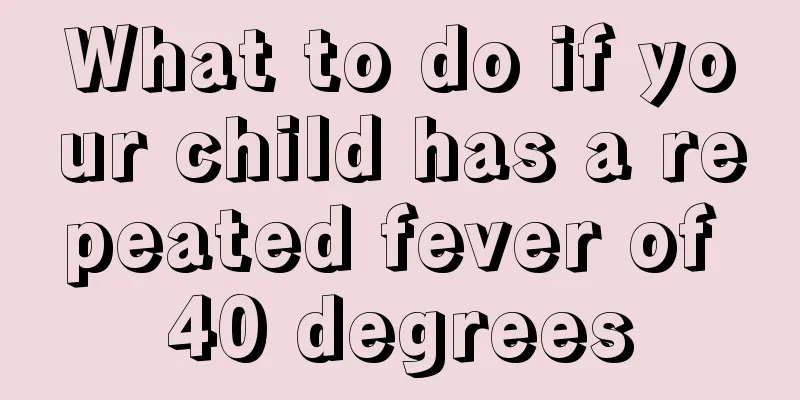What should I do if my child’s skin is burned?

|
It has to be said that some parents are really careless. Take bathing their children as an example. After boiling the water, they casually add a little cold water and let the children sit in the bathtub without even testing the water temperature. As a result, the children's skin is scalded by the boiling water. Because children's skin is relatively tender, the consequences of burns are more serious. So, what should we do if children have skin burns? First aid for burns: (1) If a first-degree burn occurs and the skin becomes red and painful, it can be treated at home. Rinse with cold boiled water or soak in tap water or apply wet gauze after the injury to relieve the pain. But be careful to avoid breaking the skin to avoid infection. (2) Second-degree burns damage the dermis and will cause blisters about 30 minutes after the burn. At this time, you can apply a cold towel first, but remember not to apply ointment, soy sauce, etc., as this will easily contaminate the wound. Because the second-degree burn wound has high sterility requirements, even if you go to the hospital, you must first clean the wound. In short, except for first-degree burns which can be treated at home, burns above second degree should be sent to the hospital for treatment. During emergency treatment, keep the wound clean. Do not apply ointments or cover the wound with unclean cloth to avoid secondary infection. Precautions l) If a child develops a fever, has increased local pain, or has pus discharge after being scalded, it means that the wound has become infected and inflamed, and a doctor should be sought promptly. 2) For serious burns, especially those on the head, face and neck, children should be sent to the hospital for treatment as soon as possible because they may go into shock at any time. 3) For mild burns on the head, face, neck, hands, arms, etc., after cleaning the wound and applying medicine, there is no need to bandage the wound, so that the wound can be exposed to the air, thus keeping it dry and speeding up the recovery of the wound. |
<<: What's wrong with children's red corners of mouth?
>>: What should I do if my child has low blood pressure?
Recommend
Why does my baby have so much eye mucus in his eyes?
The human body needs to eat something every day. ...
Will hand, foot and mouth disease recur? Will hand, foot and mouth disease recur?
The ears cannot be healed after just one infectio...
What should I do if my child has a fever, convulsions, and foaming at the mouth?
If a child has a fever, no matter how high the fe...
What to do if your five-month-old baby has repeated fevers
Children's fever is indeed a very tricky prob...
Ways to enhance your child's immunity
The weather is cold in winter and the temperature...
What should I do if my child has recurrent tracheitis?
It is terrible if a child has bronchitis. He or s...
If your child’s face turns yellow, this is how you should treat it!
Some children are pink and tender when they are y...
Why does the baby cry when defecating?
Generally speaking, when taking care of babies in...
Symptoms of childhood variant asthma
Many parents are very concerned about their child...
What to do if your baby sleeps too little
Some babies' bodies are very fragile, so once...
What are the treatment and prevention methods for children's night terrors?
Some babies often have night terrors when they ar...
What is the cause of the white coating on the child's tongue?
He can also judge the disease by judging the pati...
Baby eating milk powder without pooping
Many new parents have no idea how to take care of...
Don't treat children's kidney disease randomly. Learn these treatment rules.
In the treatment of pediatric kidney disease, in ...
Is bone cracking in teenagers due to calcium deficiency?
Teenagers often encounter calcium deficiency prob...









